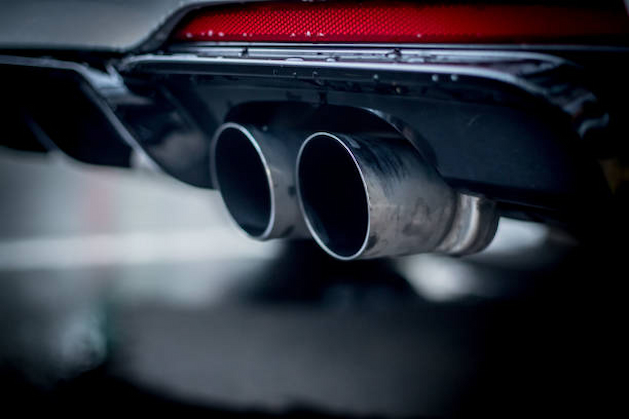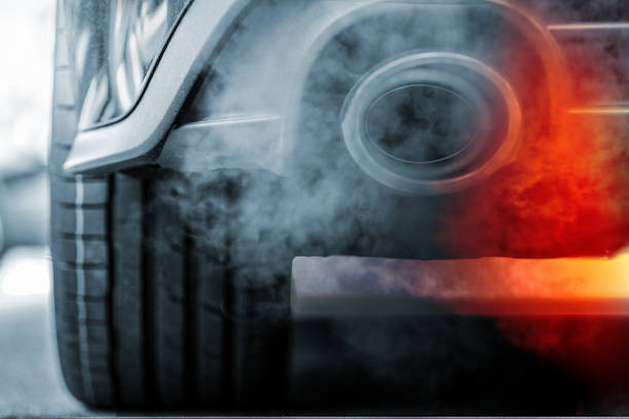Ask any experienced automotive engineer and they’ll tell you: in spite of its seeming simplicity, exhaust system design is probably the most complex aspect of high performance engine building. It’s a science that requires a balance of flow dynamics, metallurgy and acoustics. And unlike virtually every other component of high performance engine design, exhaust systems can’t rely on sheer size to deliver maximum output.
The fact is, while there are a lot of aftermarket exhaust manufacturers selling really attractive exhaust configurations, there aren’t many that can successfully strike the balance needed to grind out the best performance. That’s why anyone looking at buying a high performance exhaust needs to be aware of these different aspects, as well as how they come together to make more power.
Exploring the Benefits of High Performance Exhaust Balance
Let’s be honest: while nothing screams high performance louder than a shiny set of wide-diameter exhaust pipes, not every system that looks fast is fast. That’s why anytime auto enthusiasts are shopping for high performance aftermarket exhaust systems, they need to have a clear understanding of how these systems function and what can be expected from them.
No matter the type or size of the engine, or the type of induction system it’s running, the benefits of mounting a high performance exhaust system are hard to ignore, and they include:
- Better acceleration. High performance car exhausts enable engine power to come on quicker and smoother, making it easier to accelerate faster.
- Quicker throttle response. The reduced back pressure of aftermarket exhausts allows fresh air/fuel mixtures to enter the cylinders quicker, giving engines the responsiveness they need to pass or merge with confidence.
- A boost in output and torque. Noticeable boosts in output and torque are to be expected with improved exhaust airflow, and are exactly what’s needed for heavy duty off-roading, uphill driving or when towing heavy loads.
- Improved fuel economy. With a reduction in back pressure and easier air/fuel induction, an engine with an aftermarket exhaust system doesn’t have to work as hard, resulting in a modest increase in fuel economy.
- An impressive exhaust note. The low restrictions and quicker airflow of high performance exhausts permit engines to put out a more impressive exhaust note, which can be tuned even further with a valved muffler.
Make no mistake: when it comes to high quality, high performance exhaust for cars, balance means everything. That’s why most auto enthusiasts would be content to buy a high performance exhaust system that could reliably realise only half of these benefits. Only the best engineered systems can be counted on to consistently deliver on all points, though. That’s where a manufacturer’s expertise in flow dynamics pays big dividends.
Flow Dynamics Pay Big Aftermarket Exhaust Dividends
Even though there’s no shortage of critical parameters involved with designing high performance exhausts, flow dynamics is arguably the most influential. As a science, it’s the knowledge of how scavenging, velocity and pressure affect the movement of heated gases within a system.
And as all of these properties can vary from engine to engine – and even from engine configuration to engine configuration – premier aftermarket exhaust systems manufacturers have to know how to maximise them. Flow dynamics is all about balance, and this is where premium high performance exhausts for cars get to the basics like:
- Achieving maximum scavenging. Scavenging uses the vacuum created by hot exhaust gases moving from high pressure to low pressure to maximise the fresh air/fuel charges being drawn into the combustion chambers.
- Realising maximum gas velocity. Exhaust velocity is the speed that spent gases move through the system, with the best engine scavenging occurring when gas velocity is at its highest.
- Reducing backpressure. Backpressure is the result of resistance to spent gases moving through the system, and reducing backpressure is the key to increasing gas velocity.
Ideally, a properly balanced, high flow/high performance car exhaust will be engineered to deliver optimal scavenging when it keeps spent gas velocities high and backpressure low. And by adhering to the balanced basics of flow dynamics, exhaust performance doesn’t have to rely on oversized pipes which can actually reduce gas velocity and vacuum, and an invariable drop in engine output and fuel economy.

Material Selection is the Cornerstone of Exhaust System Balance
While correctly engineered performance exhaust systems for cars depend on flow dynamics to regulate exhaust gas behaviour, it’s the construction of the system itself that actually regulates gas movement. TIG welded joints and flanges, mandrel bent curves, and precise internal radii are all instrumental in ensuring higher velocities and turbulence-free movement. It takes the right balance of lightweight alloys, however, to bring everything together.
Material selection is the most crucial component of aftermarket exhaust construction. That’s why top quality manufacturers insist on metals that are cost conscious, highly workable and offer maximum corrosion resistance and thermal efficiency, such as:
- Corrosion resistant 304 grade stainless. Durable, chromium-rich 304 stainless is the most commonly used alloy for aftermarket exhaust for cars, and is preferred for its corrosion resistance, versatility and easy workabililty.
- Cost efficient 409 grade stainless. 409 stainless is a cost conscious alternative to 304 stainless that features comparable corrosion resistance and versatility, while also offering excellent heat resistance and thermal retention properties for scavenging.
- Thermally efficient titanium. Although titanium can cost up to five times more than 304 stainless, it’s the alloy of choice for lightweight, high performance on- and off-road exhaust systems.
With a wide range of materials and pipe configurations to choose from, auto enthusiasts never have to worry about not finding a system that’s compatible with their type of driving, or compliant with their local registration requirements. This also applies to mufflers, where the balance of compliance and acoustics has seen the evolution of electronically controlled mufflers reaching brand new heights.
Electronically Controlled Mufflers Help Balance Exhaust Acoustics
Electronically controlled mufflers like XFORCE’s patented Varex™ muffler have reinvented the functionality of mufflers. And while manually tunable muffler functionality isn’t new, the multi-modal valve assemblies of electronically controlled mufflers allows drivers to modify both the exhaust note and the amount of backpressure according to driving conditions, with only the press of a button with:
- Standard Street Mode. In street mode, an electronically controlled muffler’s valve assembly functions as a standard muffler, providing the most backpressure and absorbing the most sound.
- Enhanced In-Between Mode. In this mode, the valve assembly provides only a partial restriction of exhaust gases, allowing enhanced engine breathing and a sound that’s noticeably more aggressive.
- Full Race Mode. Full race mode is equivalent to a full straight-through system, with the valve assembly offering no restrictive backpressure and producing the loudest exhaust note.
Electronically controlled mufflers like the Varex™ allow auto enthusiasts to fine tune both their exhaust flow and acoustic note based on where they’re driving and how they’re driving. And with the ability to order high performance exhaust systems complete with electronically controlled mufflers online, the balance has never been more in the enthusiast’s favour than it is right now.
The Final Word
At the end of the day, exhaust system design is all about balance. Everything from the amount of extra power a system produces to the rate of fuel it allows an engine to consume all has to fit together seamlessly. And when it comes to aftermarket systems, only the top manufacturers have the engineering expertise to bring all the aspects of a premium system together.
It’s important, therefore, for auto enthusiasts to know what criteria to look for in exhaust systems, and to be sure that the manufacturer understands the importance of balance. It’s an investment in time and research that they won’t regret making.


